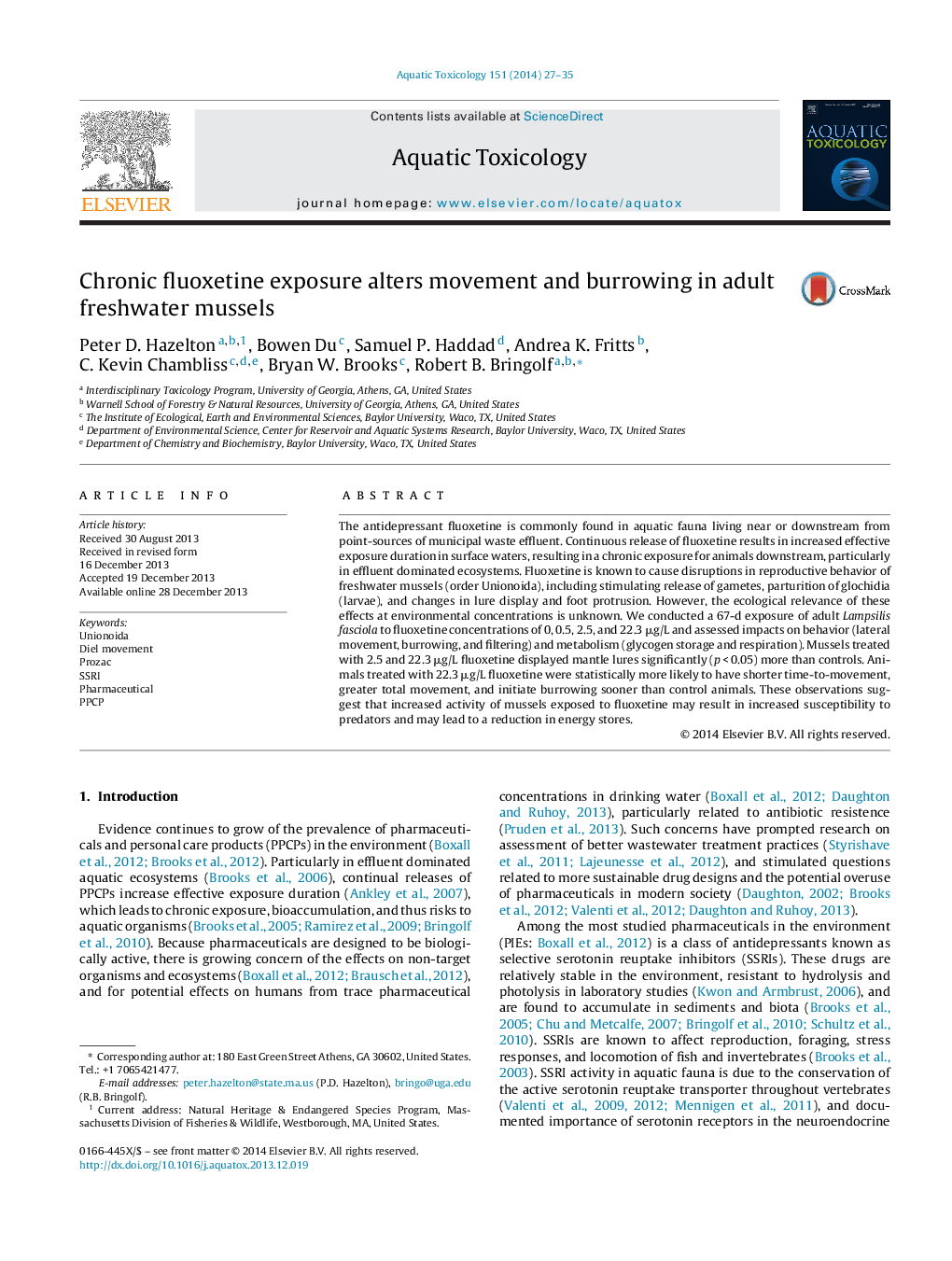| Article ID | Journal | Published Year | Pages | File Type |
|---|---|---|---|---|
| 6382332 | Aquatic Toxicology | 2014 | 9 Pages |
Abstract
The antidepressant fluoxetine is commonly found in aquatic fauna living near or downstream from point-sources of municipal waste effluent. Continuous release of fluoxetine results in increased effective exposure duration in surface waters, resulting in a chronic exposure for animals downstream, particularly in effluent dominated ecosystems. Fluoxetine is known to cause disruptions in reproductive behavior of freshwater mussels (order Unionoida), including stimulating release of gametes, parturition of glochidia (larvae), and changes in lure display and foot protrusion. However, the ecological relevance of these effects at environmental concentrations is unknown. We conducted a 67-d exposure of adult Lampsilis fasciola to fluoxetine concentrations of 0, 0.5, 2.5, and 22.3 μg/L and assessed impacts on behavior (lateral movement, burrowing, and filtering) and metabolism (glycogen storage and respiration). Mussels treated with 2.5 and 22.3 μg/L fluoxetine displayed mantle lures significantly (p < 0.05) more than controls. Animals treated with 22.3 μg/L fluoxetine were statistically more likely to have shorter time-to-movement, greater total movement, and initiate burrowing sooner than control animals. These observations suggest that increased activity of mussels exposed to fluoxetine may result in increased susceptibility to predators and may lead to a reduction in energy stores.
Related Topics
Life Sciences
Agricultural and Biological Sciences
Aquatic Science
Authors
Peter D. Hazelton, Bowen Du, Samuel P. Haddad, Andrea K. Fritts, C. Kevin Chambliss, Bryan W. Brooks, Robert B. Bringolf,
